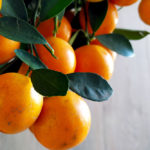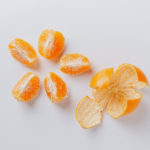Have you ever wondered what the difference between mandarin and clementine is? Are you a lover of this little citrus but you don't know which one is? In Cítricos Siscaret we will tell you everything you need to know to differentiate mandarin from clementine.
The first thing we have to tell you is that the consumption of both mandarin and clementine should be habitual, since they provide many health benefits and also, they are the perfect fruit to take to work or to school.
Now, with that said, we are going to tell you what the difference between a mandarin and a clementine is. Pay attention and take note!
How to differentiate mandarin and clementine?
There are a series of characteristics that will help us to find the difference between mandarin and clementine, perhaps if you are not an expert farmer or a fruit seller with a lot of experience, you may not see it at first glance, but we are going to tell you all the secrets. Keep them all in mind when buying fruit:
Season
The first thing we have to take into account to differentiate the mandarin from the clementine is that the clementine begins the season, 2 or 3 months before the mandarin, although this may vary depending on the varieties.
Source
Regarding the origin of these fruits, the difference between the mandarin and the clementine is that the mandarin began to be cultivated around 2000 BC. in the Middle East area, on the other hand, clementine has its origin in the 19th century, so we have been consuming it for less time.
Skin
Regarding the skin of both citrus fruits, there is a difference between mandarin and clementine that will help us to identify each one of them. The skin of the mandarin is much closer to the segments, and it costs a little more to peel it and it is rougher. The skin of the clementine is softer, and it is easier to peel, which makes eating it easier, especially for the little ones.

Taste
Another difference between mandarin and clementine is the taste. Usually the mandarin tends to have a very refreshing acid flavor; on the other hand, the clementine has a sweeter flavor, more similar to oranges.
Seeds
If we look at the seeds, there is another difference between mandarin and clementine that is quite clear. Tangerines have seeds inside, while, clementines usually not, although a specific variety does. That reason is why it is the favorite fruit of the kids.
Size
Finally, another difference between mandarin and clementine is their size. Although they are quite similar, clementine is usually a little smaller than mandarin, but it will also depend on the harvest and the variety, but it is a factor that can help us determine if it is one or the other.
What varieties of mandarins can you find in Cítricos Siscaret?
The mandarin has many varieties, which are essentially grouped into three groups: the 'Clementines', the' Satsuma 'and the' Mandarin hybrids. Most of the varieties originate due to spontaneous mutations of the mandarins themselves or to the process of mixing with other citrus fruits carried out by humans. At Cítricos Siscaret we grow 6 varieties of mandarins:
Mandarin Clementines
This type of mandarin, known as clementines, originates from the common mandarin also called Citrus reticulata.
They have small and medium fruit, usually do not have seeds, are juicy and have a pleasant flavor.
Clementine "Clemenrubí"
This variety originated as a mutation of the "Oronules" variety whose origin is located in Lorigilla, province of Valencia.
It is one of the earliest clementines in the season and is usually harvested from mid-September to mid-October.
It usually has an intense orange color, the size of its pieces is bigger than that of "Oronules" from which it is derived and has a high juice content, as well as being easy to peel despite having a resistant rind.
Clementine "Clemenules"
This type of clementine called “Clemenules” has its origin in the Castellón city of Nules, as a spontaneous mutation of the “Clementina Fina” tree. Most consumers, farmers, and specialists consider it the best variety, due to its sweet and pleasant taste. In addition, it has a high production yield, which makes it the most widely cultivated variety.
Usually, the "Clemenules" is harvested once the season of the "Clementina Fina" has started. Is is a fruit whose properties are maintained over time until the month of January as long as the weather conditions are favorable.

Clementine "Orogrande"
It is a variety of clementine that derives from the "Clemenules" and has its origin in Murcia. Its fruit is very similar in size or even bigger than the variety of clementine "Clemenules" with a smooth skin and fewer essential oil glands. They are tangerines with an intense orange color, very sweet and tasty, as well as very easy to peel and comfortable to eat, providing a high content of high-quality juice.
Clementine "Clemenpons"
The clementine Clemenpons is a mutation of the Clemenules variety that appeared in Pego (Alicante). The two varieties are very similar, except for their maturation, which is more advanced in Clemenpons.
In addition, its harvest is very early, starting 25 days before the Clemenules variety thanks to its low level of acidity.
Mandarin hybrids
It is the most extensive and varied group since it includes mandarins. There are many varieties such as:
Mandarin hybrid "Clemenvilla" or "Nova"
The hybrid mandarin "Nova" or "Clemenvilla" is the result of the cross between the clementine "Fino" and the "Tangelo Orlando" that was made by Gardner and Bellows in the 1940s in Florida.
It is a productive variety that can be found in most of our citrus areas. Its ripe fruit has an intense orange and reddish color and a medium-large size. The pulp is tender, has no seeds and offers high juice content, but the strong adhesion of the skin to the pulp makes it difficult to peel.
Mandarin hybrid "Mor"
Mor mandarins have similar characteristics to Murcott, being a hybrid resulting from the crossing of a mandarin and a sweet orange.
The shape of the fruit is flattened to round and with a smooth skin. It is a high-quality fruit with a very high sugar-content and enough acid to give a well-balanced flavor. Their optimum ripening point is in February.
Do you already know what the difference between mandarin and clementine is? Well, we have already told you about the varieties of mandarins that you can find in Cítricos Siscaret. Do not forget that you can place your orders online, and we will take them directly to your door. Visit our website and discover all our products!




